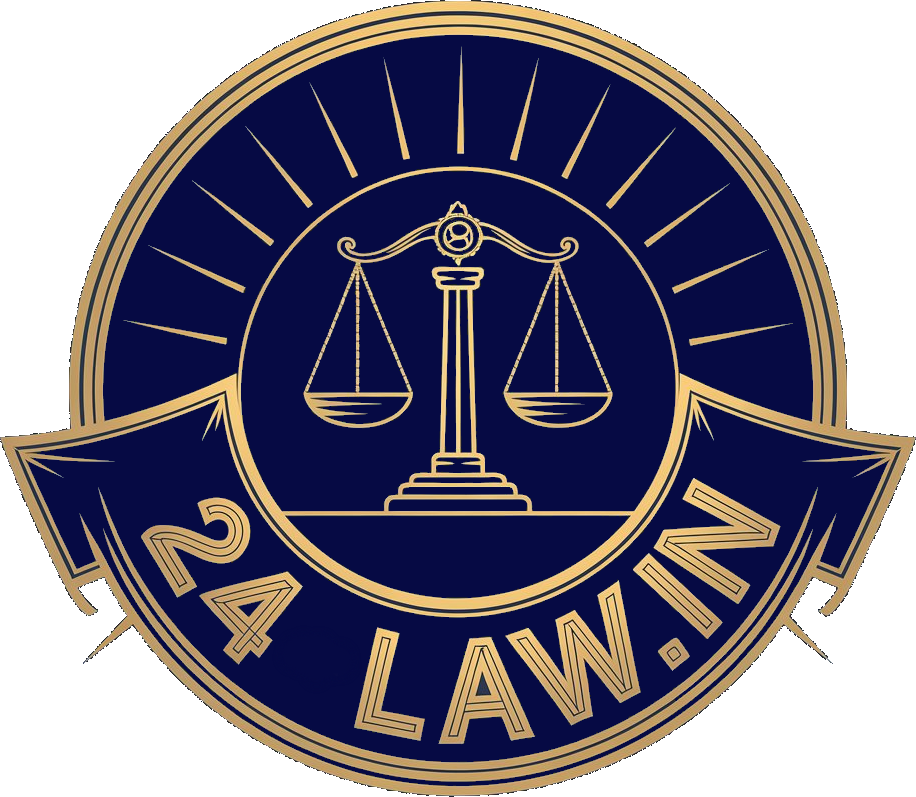By Any And Every Means Whatsoever Includes Digital Use | Assignments Held Perpetual And Fully Enforceable | Bombay High Court Rejects Copyright Infringement Allegations Against Adani Wilmar
- Post By 24law
- July 4, 2025

Sanchayita Lahkar
The High Court of Bombay Single Bench of Justice Manish Pitale held that the plaintiff failed to prove infringement of copyright in the musical works forming part of cinematographic films produced by O.P. Ralhan. The court ruled that defendant no.2 holds perpetual rights under the assignment agreements and is entitled to exploit the works “by any and every means whatsoever”. The court further directed that defendant no.2 lawfully granted a licence to defendant no.1, and all issues framed in the suit were answered in favour of the contesting defendants. The plaintiff’s claims for perpetual injunction, damages of Rs.10 crore, accounts of profits, and destruction of material were dismissed. The court concluded that the agreements remain valid and binding, and that no limitation restricting exploitation to only physical mediums could be read into the wide-ranging assignment clauses.
The suit arose from a dispute concerning copyright in musical works forming part of seven cinematographic films produced between 1963 and 1983 by O.P. Ralhan, owner of Ralhan Productions. After his death in 1999, the rights were bequeathed to the plaintiff through a Will probated in 2013. The agreements in question were executed on 19.12.1962, 19.01.1965, 24.04.1967, 07.01.1970, 19.12.1972, 15.01.1977, and 27.04.1980, whereby rights were assigned to the predecessor of defendant no.2, later assigned to defendant no.2.
Between 2004 and 2005, the plaintiff sent communications seeking royalty statements and payments. On 21.07.2009, the plaintiff acknowledged part payment of Rs.50,000/- as royalty and requested accounts from 2002-03 onwards. Defendant no.2 sent a letter dated 09.01.2006 referring to the agreements and proposing revenue sharing terms for non-physical mediums. On 18.01.2006, the plaintiff replied that legal advice would be sought and that until amendments were executed, existing agreements would bind the parties.
On 12.05.2010, through her advocate, the plaintiff contended the agreements were invalid and demanded that defendant no.2 cease exploitation, furnish accounts, and pay interest at 18% on unpaid royalty. Defendant no.2, by its advocates, refuted the claims on 31.05.2010, asserting the agreements were valid and subsisting and a statement of accounts would follow. Thereafter, a television advertisement aired by defendant no.1 in December 2011 used a song from the film Talash, prompting the plaintiff to issue a cease and desist notice on 05.12.2011. Defendant no.1 replied that it had obtained a licence from defendant no.2, which claimed it was the absolute copyright owner.
On 01.03.2012, the plaintiff filed the commercial IP suit seeking a perpetual injunction restraining defendant nos.1 and 2 from infringing copyright, creating third party rights, using works from the seven films, and demanded Rs.10 crore in damages, a true account of profits, and an order to destroy infringing material. An interim injunction was dismissed on 08.05.2012. The court found the plaintiff had not demonstrated how the agreements had expired or how the defendants could not claim rights under them. It was found that clauses demonstrated the parties always understood that rights conferred included sound recordings.
On 20.03.2013, the court framed ten issues including whether the plaintiff proved ownership of copyright, whether defendants infringed, whether perpetual rights existed, whether defendant no.1 was a licensee, whether royalty was timely paid, and whether damages or accounts were due. The parties led oral and documentary evidence.
The plaintiff argued that the rights assigned were limited to physical mediums such as gramophone records, citing the technological context of the 1960s and statutory amendments that later broadened the scope of sound recordings to include non-physical mediums. The plaintiff relied on sections of the Copyright Act as amended in 1983, 1994, and 2012, particularly proviso to section 18, arguing that non-physical exploitation was beyond the scope of the agreements. Reliance was also placed on the Cohen v. Paramount Pictures Corporation decision and the Madras High Court decision in Raj Video Vision v. K. Mohan Krishnan to argue that rights not expressly assigned could not be deemed assigned.
Defendant no.2 contended that the plaintiff’s entire case in the pleadings rested on expiry of the agreements with time and not on any limitation to physical mediums. It argued the agreements assigned perpetual rights “by any and every means whatsoever” and that the parties’ conduct confirmed the wide scope of the assignment. Defendant no.2 also emphasised the significance of the Will and royalty payments accepted by the plaintiff and her father, showing the understanding that rights were perpetual.
Defendant no.1 argued that it had acted bona fide under a valid licence granted by defendant no.2, had no knowledge of any contrary claim, and that the licence had expired in 2012 rendering the prayer for injunction infructuous.
The court observed: “Clause 10 of the agreement dated 24.04.1967 reads as follows: ‘The Company shall be the owner of the original plate within the meaning of The Copyright Act 1957 and any extensions or modifications thereof of each title recorded or re-recorded under the provisions of this Agreement at the time when such plate shall be made. The Company shall also be entitled to the sole right of production, reproduction, sale, use and performance (including broadcasting) throughout the world by any and every means whatsoever of the records of the works performed by the artistes and musicians etc. under this Agreement.’”
Justice Pitale stated: “This Court is unable to read the limitation only to physical mediums as canvassed on behalf of the plaintiff. The said clause clearly confers rights by any and every means whatsoever.”
“This Court finds substance in the contention that the assignment of rights in the subject works was in perpetuity and the restriction of time period was only to indicate that such rights were perpetually assigned in the context of works that were created within the said time period.”
“What has been argued has not been pleaded and what has been pleaded has not been argued. The object and purpose of pleadings is to enable the adversary party to know the case it has to meet, this being a part of the concept of fair trial.”
“The plaintiff’s emphasis on later statutory amendments does not alter the plain language of the agreements, which are to be interpreted on the basis of the Copyright Act, 1957 as it then stood.”
“The letter dated 09.01.2006 cannot be construed as an admission that the rights were limited only to physical mediums. On the contrary, the letter shows the defendant no.2’s readiness to streamline revenue sharing, not to relinquish any existing rights.”
“The conduct of the original owner and the plaintiff in accepting royalties shows that the parties treated the assignment as covering all mediums.”
“Royalty payments were made from time to time by defendant no.2 and they were accepted by the original owner O.P. Ralhan and even by the plaintiff. This conduct assumes significance.”
“The plaintiff has failed to produce sufficient evidence to support claims of suppression or to show any violation warranting the adverse inference sought.”
“The interim order dated 08.05.2012 decided a pure question of law concerning the interpretation of the agreement. The finding that the sound recording was part of the rights assigned is relevant.”
“The provisions introduced later by way of amendments to the Copyright Act cannot unsettle contractual rights which crystallised at the time of execution of the agreements.”
The court held that issue nos.2, 4, and 5 were answered in favour of the contesting defendants and against the plaintiff. It recorded: “The plaintiff has failed to prove that the contesting defendants infringed upon copyright belonging to the estate of O.P. Ralhan and defendant no.2 has proved that it has perpetual rights to exploit the music and songs belonging to the estate of O.P. Ralhan and also holds perpetual right to grant licence to others in respect of the said music and songs.”
The court further directed: “Issue no.3 is answered in favour of defendant no.1. The defendant no.1 has proved it had a valid licence agreement dated 22.11.2011 executed by defendant no.2 for the song forming part of the film ‘Talash’. The grant of such licence is within the perpetual rights assigned under the agreement.”
The court observed: “The plaintiff has failed to discharge the burden to prove timely non-payment of royalty. Defendant no.2 has demonstrated that royalty was paid and accepted.”
On the plaintiff’s claim for damages, the court recorded: “The plaintiff has not led sufficient evidence to prove the claim for damages or to quantify any account of profits. The claim for damages fails accordingly.”
Accordingly, the court ordered: “The suit stands dismissed. There shall be no order as to costs.”
Advocates Representing the Parties
For the Petitioners: Mr. Ashish Kamat, Senior Advocate with Mr. Rohan Kadam, Ms. Shirley Mody, Ms. Rucha Vaidya instructed by M/s. K. Ashar & Co.
For the Respondents: Mr. Naresh Thacker with Mr. Shailendra Poria and Mr. Samarth Saxena instructed by Economic Laws Practice; Dr. Veerendra Tulzapurkar, Senior Advocate with Mr. Gaurav Mehta, Mr. Chakrapani Misra, Mr. Jigar Parmar, Ms. Pranali Vyas instructed by Khaitan & Co..
Case Title: Rupali P. Shah vs Adani Wilmar Ltd. & Ors.
Neutral Citation: 2025:BHC-OS:8516
Case Number: Commercial IP Suit No.101 of 2012
Bench: Justice Manish Pitale


